FREE Reading Comprehension Articles for your next English Language Arts class

Reading Comprehension Strategy Bundles for Upper Elementary, Middle School and High School
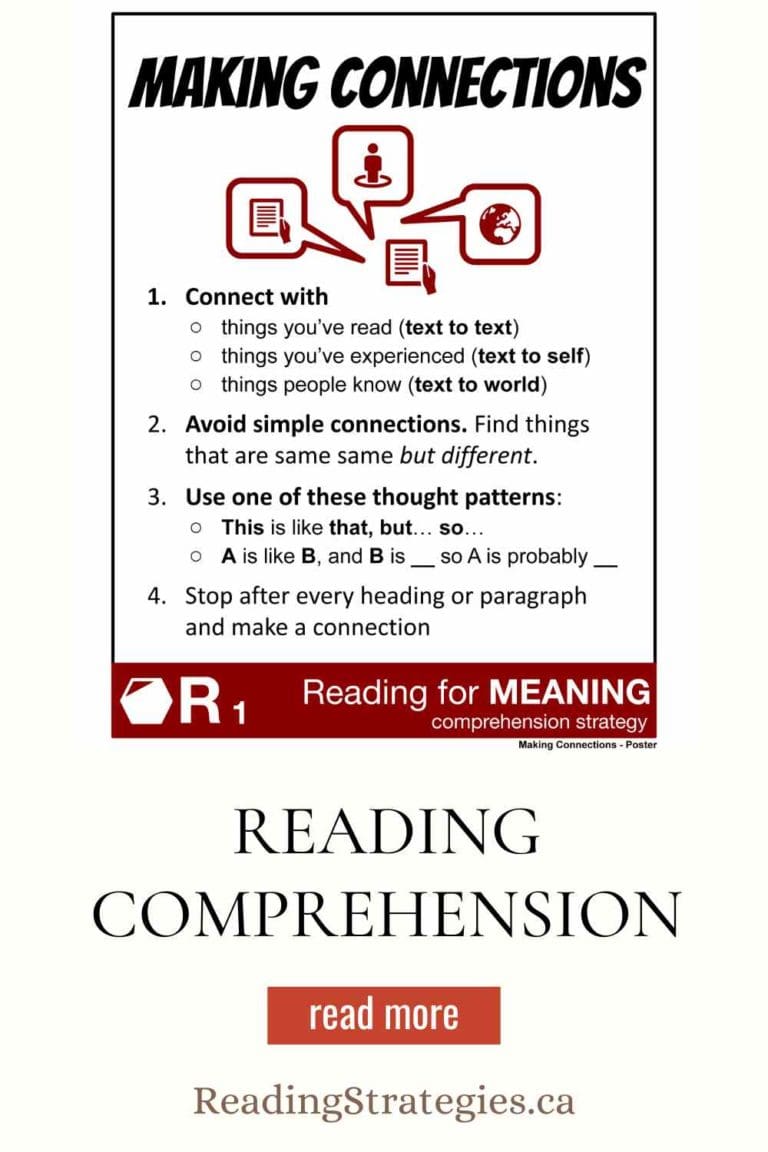
Making Connections Reading Strategy Lesson Plan: How to make deeper Text-to-Self, Text-to-Text, and Text-to-World connections
Making Connections is more than simply finding something that the text reminds you of.
Use this lesson to help your students develop deeper connections instead of thin connections like “this book has a dog and I have a dog…”
How to Make (Deeper) Connections – 4 PRO TIPS:
1. Connect with things you’ve read (text to text), things you’ve experienced (text to self), or things people know (text to world)
2. Avoid simple connections. Find things that are same-same but different.
3. Use one of these thought patterns: “This is like that, but… so…” or “A is like B, and B is _ so A is probably _”
4. Stop after every heading or paragraph and make a connection
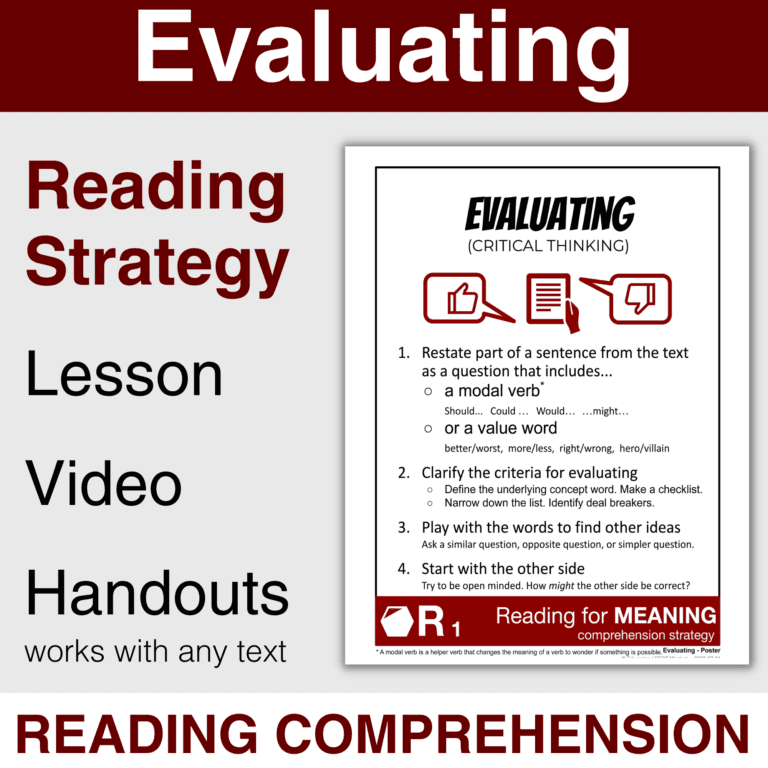
Evaluating Reading Strategy Lesson Plan
Teach students CRITICAL THINKING strategies to help students EVALUATE ideas when reading.
Evaluating is more than just forming an opinion. It’s about making an informed opinion or decision.
Use this lesson to give students a process to help them think critically about the information they read.
4 PRO TIPS to use the Evaluating Reading Strategy:
1. Restate part of a sentence from the text as a question that includes… a modal verb (Should… Could … Would… …might…) or a value word (better/worst, more/less, etc…)
2. Clarify the criteria for evaluating. Define the underlying concept word. Make a checklist. Narrow down the list. Identify deal breakers.
3. Play with the words to find other ideas. Ask a similar question, opposite question, or simpler question.
4. Start with the other side. Try to be open-minded. How might the other side be correct?
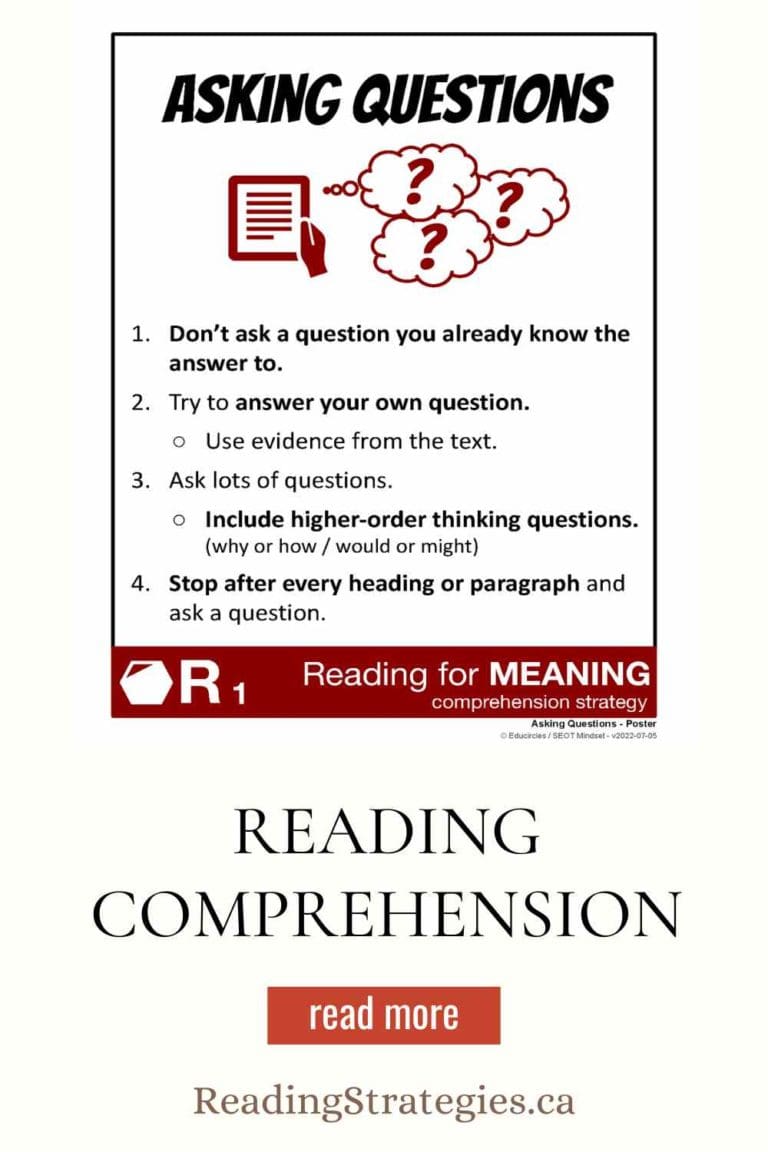
Asking Questions Reading Strategy
Teach 4 PRO TIPS to help students ask the BEST questions when reading to improve comprehension.
High-interest video / slideshow lesson – perfect for your next English Language Arts class.
Students learn how to ask better questions, so they stay engaged while they read.
Active reading strategies can show students how to gain a deeper understanding of the text they’re reading.
How to Ask (Better) Questions – 4 PRO TIPS
1. Don’t ask a question you already know the answer to.
2. Try to answer your own question. Use evidence from the text.
3. Ask lots of questions. Include higher-order thinking questions (why or how / would or might)
4. Stop after every heading or paragraph and ask a question.
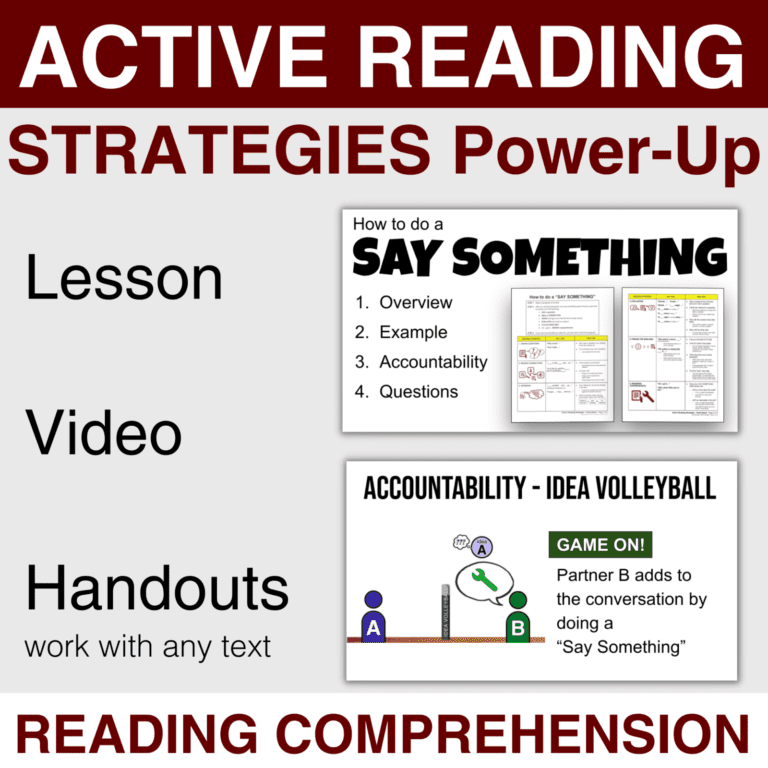
Active Reading Strategies Lesson – Power Up Tool Kit
The Active Reading Strategies Lesson includes strategies and handouts that work with any text! UPDATE: Dec 19, 2022 Improve reading comprehension with just the click of a button! (No, obviously not. But, Evaluating is one of the reading strategies explored in the “Say Something” handout.) FREE until Dec 19, 2022 at 11:59 PM Part 1….
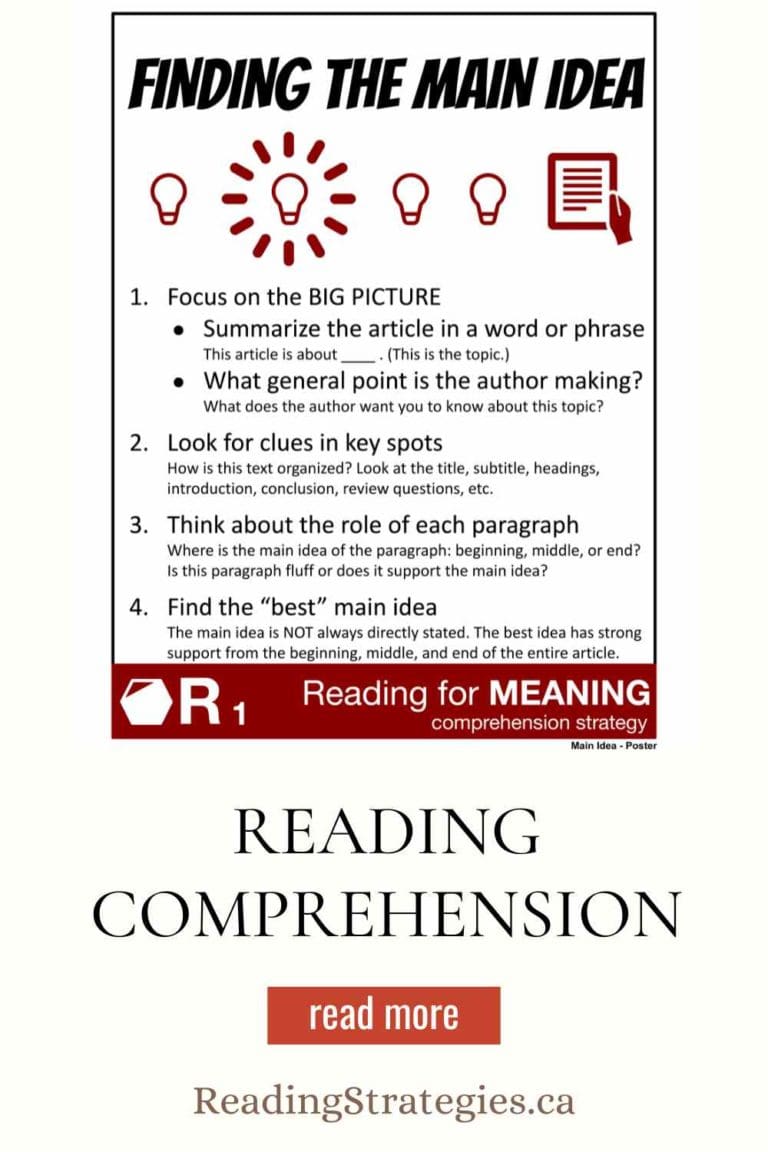
Finding the Main Idea – Reading Comprehension Strategy Lesson Plan
Finding the Main Idea is more than just figuring out what general point the author is trying to make.
It’s about recognizing that we can come up with several main ideas, but the “best” main idea has strong support from the entire article.
How to EVALUATE and FIND THE BEST MAIN IDEA (4 PRO TIPS):
1. Focus on the BIG PICTURE (the entire article). Summarize the entire article in a word or phrase. What general point is the author trying to make?
2. Look for clues in key spots. (How is the text organized?)
3. Think about each paragraph. What is this paragraph about? (Where is the main idea in the paragraph? Beginning? Middle? End?) What role does this paragraph play?
4. Find the “best” main idea. The main idea is NOT always directly stated. The best idea has strong support from the beginning, middle, and end of the entire article.
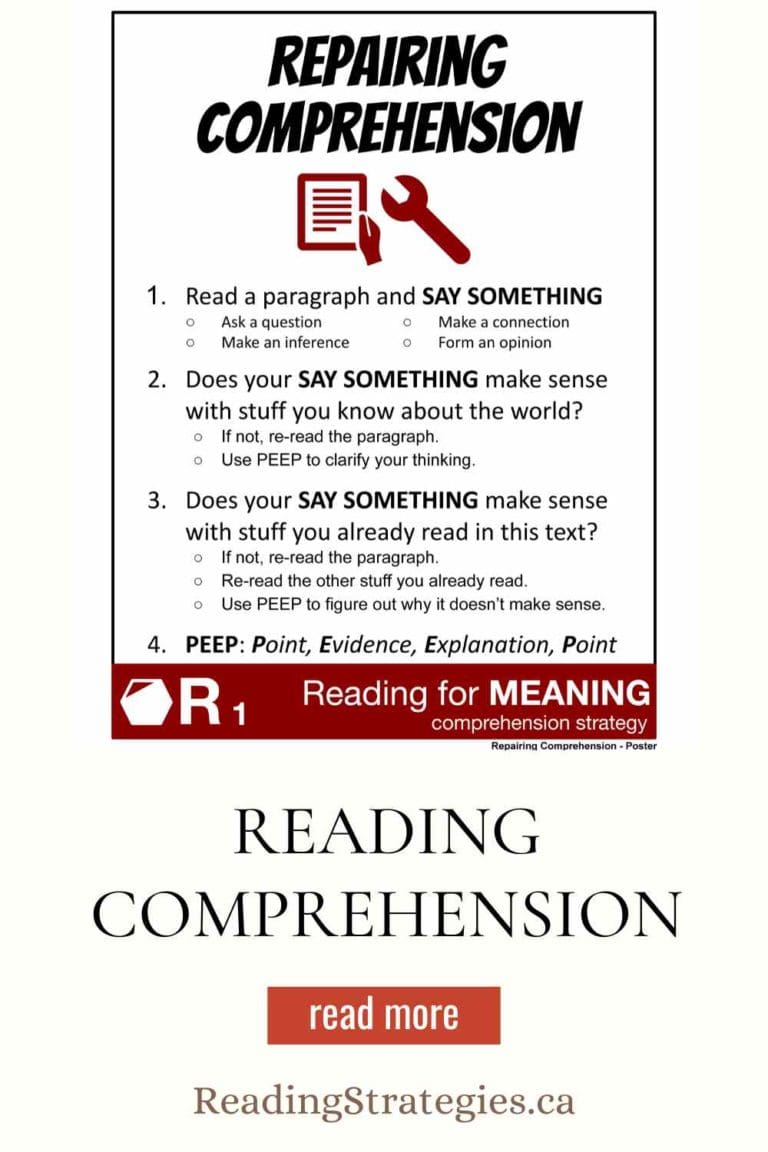
Repairing Comprehension Reading Strategy Lesson Plan
Teach students HOW to monitor understanding and clarify thinking when reading.
There’s more to figuring out what’s going on in a text than just simply re-reading.
4 PRO TIPS: How to Monitor and Repair Comprehension
1. Read a paragraph and SAY SOMETHING: Ask a question, Make a connection, Make an inference, Form an opinion
2. Does your SAY SOMETHING make sense with stuff you know about the world? If not, re-read the paragraph. Use PEEP to clarify your thinking.
3. Does your SAY SOMETHING make sense with stuff you already read in this text? If not, re-read the paragraph. Re-read the other stuff you already read.Use PEEP to figure out why it doesn’t make sense.
4. Use PEEP: Point, Evidence, Explanation, Point
Reading Comprehension Articles focusing on the 6Cs of Education
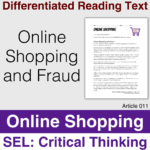
Online Shopping and Fraud – Critical Thinking – Article 011
Reading comprehension article handout (differentiated Gr 5, 7, 9, 11) about COLLABORATION and how diverse leadership can help.
Annamie Paul was the first Black person to be the leader of a federal political party in Canada. She won the leadership race for the Green Party of Canada in October 2020.
The take-away message is that collaboration happens when you have a group of people working together towards a common goal or objective, and they create something new:
it could be a new solution to a problem, a new understanding of an issue, or a new plan to reach a goal.
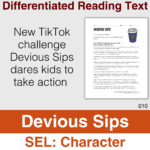
Devious Sips, TikTok trends, and Active Citizenship
Reading comprehension article handout (differentiated Gr 5, 7, 9, 11) about COLLABORATION and how diverse leadership can help.
Annamie Paul was the first Black person to be the leader of a federal political party in Canada. She won the leadership race for the Green Party of Canada in October 2020.
The take-away message is that collaboration happens when you have a group of people working together towards a common goal or objective, and they create something new:
it could be a new solution to a problem, a new understanding of an issue, or a new plan to reach a goal.
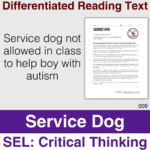
Service Dog – Is this Discrimination? (Critical Thinking)
Reading comprehension article handout (differentiated Gr 5, 7, 9, 11) about COLLABORATION and how diverse leadership can help.
Annamie Paul was the first Black person to be the leader of a federal political party in Canada. She won the leadership race for the Green Party of Canada in October 2020.
The take-away message is that collaboration happens when you have a group of people working together towards a common goal or objective, and they create something new:
it could be a new solution to a problem, a new understanding of an issue, or a new plan to reach a goal.
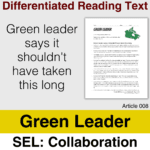
Green Leader Says It Shouldn’t Have Taken This Long – Collaboration
Reading comprehension article handout (differentiated Gr 5, 7, 9, 11) about COLLABORATION and how diverse leadership can help.
Annamie Paul was the first Black person to be the leader of a federal political party in Canada. She won the leadership race for the Green Party of Canada in October 2020.
The take-away message is that collaboration happens when you have a group of people working together towards a common goal or objective, and they create something new:
it could be a new solution to a problem, a new understanding of an issue, or a new plan to reach a goal.
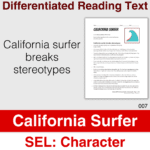
California Surfer Breaks Stereotypes – Character Education
This article is about CHARACTER and how a California surfer breaks stereotypes just by being herself.
Mary Mills is a local California surfer who has written over 1,305 blog posts chronicling everything from her daily thoughts, her surf sessions, and her titanium knee replacement.
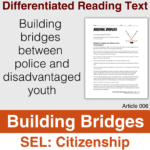
Building Bridges between Police and Youth
Reading response article about CITIZENSHIP and building bridges between police officers and disadvantaged youth.
PK Subban is a professional hockey player. He has been using his position of power to help build bridges between police officers and disadvantaged youth by creating opportunities for the two groups to hang out with each other in positive ways.
The take-away message is that active citizenship means making a positive difference in your community.
We all belong to different communities – our school community, our local community, our country, the world, etc. But, citizenship also means making a positive difference to other groups based on aspects of our identity – gender, race, religion, etc.
Reading Comprehension Articles focusing on Social Emotional Learning using SEOT.
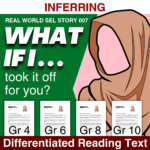
What if I took it off for you? Reading Response Passage
This singer / songwriter wonders if she took it off for you, would people like her better?
What are we talking about?
Can your Middle School and High School students infer based on clues from the text?
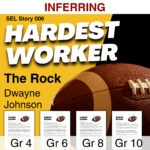
Dwayne Johnson The Rock
He was supposed to be playing in the NFL.
So, why was his dad driving him back home? All he had was seven bucks in his pocket.
How does the Rock go from ZERO to HERO?
By working harder than everyone else in the room.
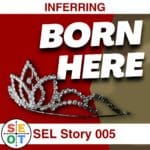
Born Here. Failed Six Years!
This person was asked by a stranger if she was born in this country.
Although immediately offended, the conversation she had with the stranger would change her life forever.
Have your students ever been offended by somebody? What happened next?
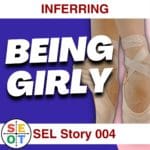
Ballet, Beauty, and Being Girly
This ballerina and beauty pageant contestant gave a speech about Why Women Should NOT Be Engineers.
And that makes her an epic ambassador for STEM – Science, Technology, Engineering, and Mathematics.
Will your students disagree?
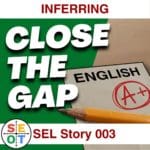
This App Can Help Close The Gap
This innovative app used by 500 million people helps close the gap between rich and poor.
Can your students guess which app this is?
This reading comprehension article goes well with the Inferring reading strategy.
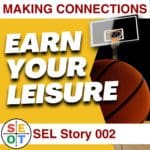
Change The Game And Earn Your Leisure
Do any of your students want to be pro athletes or celebrities one day?
Who can afford to sit courtside at a game? NBA players, rappers, drug dealers, and these two guys…
This reading comprehension article goes great with the Making Connections reading strategy.

